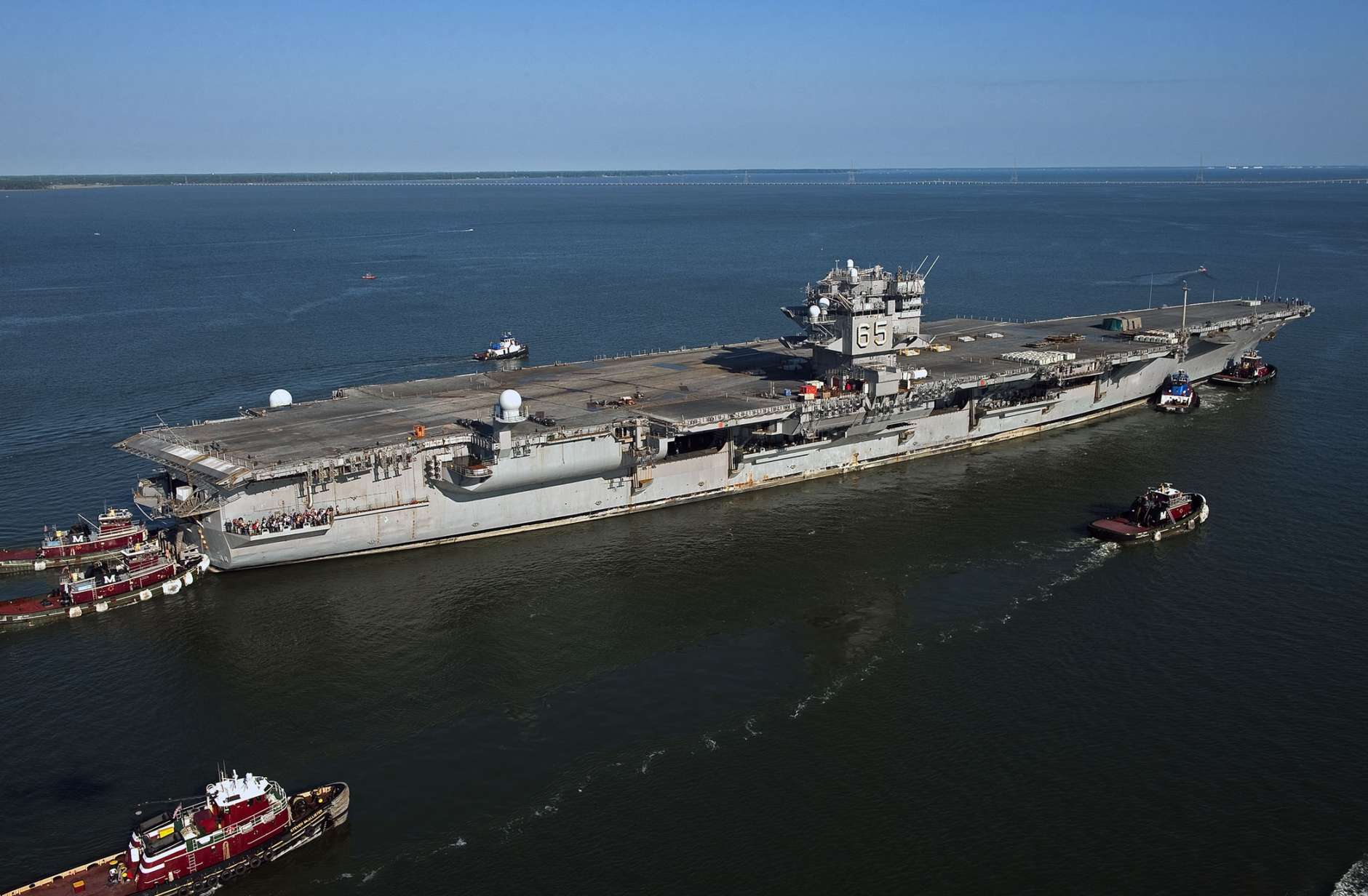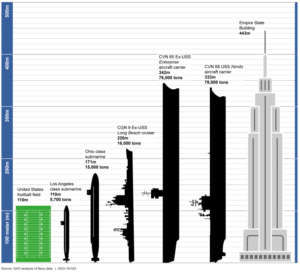
Navy carriers: Expensive in birth and death
The U.S. Navy is finding that its carriers are nearly as costly to decommission and scrap as they are to build and launch.

(June 20, 2013) The aircraft carrier USS Enterprise (CVN 65) makes its final voyage to Newport News Shipbuilding. The first nuclear-powered aircraft carrier will be dismantled at the shipyard prior to the scheduled commissioning of the next aircraft carrier Enterprise (CVN 80).
(U.S. Navy photo courtesy of Huntington Ingalls Industries by John Whalen)
Following the federal government closely for nearly 27 years has taught me at least one thing. There’s always more to learn. Sometimes, a report or fact will make even my slightly jaded eyes pop.
A case in point comes from a Government Accountability Office report. I’ve skimmed hundreds of them. Most are routine. Occasionally one makes you shake your head in wonder. Like one concerning the decommissioning of the USS Enterprise. The keel for the nation’s first nuclear-powered aircraft carrier was laid in 1958. The ship was formally decommissioned in 2017. It’s been floating at anchor at Newport News, Virginia, ever since. GAO’s picture shows a forlorn hulk turning into a rust bucket.
As the first nuclear carrier launched and the first to be scrapped, the ship is a trendsetter in death as in birth.
Historic though it may be, the Enterprise won’t receive a plaque, preserving it in perpetuity. It won’t become a hotel or a museum. No, it’s slated to become heavy melt scrap. The Navy isn’t sentimental about these things, and few ships escape this fate. I have a tiny clipping from the Pittsburgh Post Gazette from 1962. It notes the USS San Juan, on which my father served in World War II, had been scrapped, with the scrap sent to Japan. Industrial-city newspapers reported that kind of thing in those days. I’ve always enjoyed the irony. After shooting at Japanese planes over the Pacific, the ship might’ve returned to the U.S. as a boatload of Toyopets.

Anyhow, what floored me was the cost estimate to decommission the Enterprise: At least $1.5 billion, according to Navy estimates to the GAO. That’s on top of the $850 million the Navy has already spent removing the nuclear fuel. The Wikipedia article on the Enterprise states it cost $3.9 billion to build in 2017 dollars.
It took three years to build the Enterprise. It’ll take between five and 10 years to remove its reactors and shred the rest of it.
Thus the cost to decommission a nuclear carrier nears the cost of building, and take 40 percent as long as its service life. Is that a metric the Navy is preparing to live with?
The cost of decommissioning is high because of the difficulty of removing and disposing of the radioactive parts. This is highly technical and regulated work. Because of Navy capacity constraints and an intramural legal dispute over having industry take care of it, the Enterprise will linger for years to come. Industry couldn’t start the work until 2024. The Navy, busy with its nuclear carriers, couldn’t take it on until 2034.
The Navy has 11 active, nuclear-powered carriers. That’s a future scrap cost of what, $40 billion? $50 billion? Plus a century of work. Only a rich nation can even imagine such costs. For all its bluster, Russia has only one wheezy old carrier. Britannia may have once ruled the waves, but it has a single carrier and one on order. Ditto for China.
Some military seers contend carriers are basically sitting ducks in a world of war soon to be dominated by other types of weapons. If so, the U.S.carriers could be repurposed or fitted with drones.
In the meantime, two more are under construction. One of the new ones is slated to be named Enterprise. If, like me, you believe complex machines have souls, it might sail past its rusting namesake and contemplate its expensive future.
Copyright © 2024 Federal News Network. All rights reserved. This website is not intended for users located within the European Economic Area.
Tom Temin is host of the Federal Drive and has been providing insight on federal technology and management issues for more than 30 years.
Follow @tteminWFED




